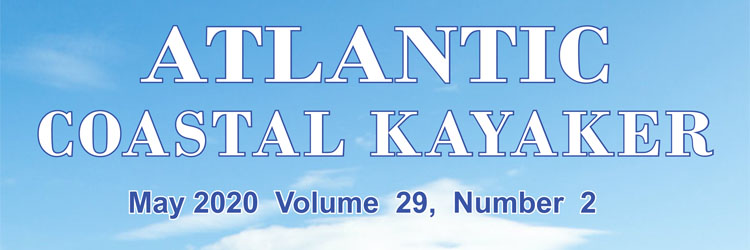|
|
Maine Lobstermen Under Pressure to Protect Right Whale
By Tamsin Venn.
The North Atlantic right whales are now swimming north on their annual migration from calving grounds off Florida and Georgia to summer waters as far north as Newfoundland. The mothers and calves at times may stay in an area for seven hours or more to rest, nurse, and play. But otherwise, it's 1.3 km an hour average steady progress.
Unbeknownst to them, on April 7 a federal judge gave them a fighting chance. Judge James Boasberg, a well-known right whale defender, ruled that federal fishery managers (National Marine Fishery Service - NMFS) had not protected the whales under the Endangered Species Act when it authorized the lobster fishery to follow certain rules without appropriately analyzing its impact on right whales.
About 400 North Atlantic right whales (there are two other species) exist and are protected under the Endangered Species Act and the Marine Mammal Protection Act.
In the best scenario, the upshot is not so much an indictment as an incentive for scientists and lobstermen to work together to protect the right whales and to sustain the business.
Maine lobster fishermen will not welcome the decision. They say they are already "regulated to death" and that the burden is not being equally shared by other fisheries.
On top of that, Maine lobstermen are now experiencing job loss due to Covid -19 with shrinking markets due to travel restrictions and restaurant closures.
The two leading causes of death of right whales are ship collisions and entanglement in fishing gear. Since 2017 they have shifted their habitat in the Gulf of St. Lawrence and Canadian waters right into the path of busy shipping lanes.
Right whales ingest plankton with wide open mouths thus risking entanglement in any rope or net fixed in the water columns. Rope wraps around their upper jaws, flippers, and tails.
As a result, the federal government issued strict instructions last year to reduce fishing line by half to avoid entanglement, creating a hardship on Maine lobstermen who argue that most of Maine's lobster fishing takes place in a near-shore exemption area. They also note that most right whale deaths have occurred in Canada from ship strikes and not from entanglements in Maine's lobster fishing gear.
|
|

|
NOAA drone photo closeup of Dragon's head and injuries. NOAA and partners are reviewing limited options for intervention. "She is extremely emaciated and gray, suggesting she may have been entangled and unable to close her mouth for months," said New England Aquarium senior scientist Amy Knowlton in a press release from the aquarium. It is believed that right whales open and close their mouths to help with body heat regulation
and that Dragon may be using up her stored body fat in an effort ot stay warm. Knowlton said the orange patches around Dragon's head, seen in aerial photos, indicate the whale's skin is infested with orange cyamids, a kind of lice that focuses on areas where there is an injury. According to the release, Dragon is in her prime breeding age range. Picture from NOAA website.
|
|
|
|
The tensions have a long history. In 1997, NOAA, which directs NMFS, created the first Atlantic Large Whale Take Reduction Plan. That immediately helped increase the whales' population. That good news stopped in 2010 when the birth rate began to drop and the whales began to move north to the Gulf of St. Lawrence for food. Entanglements and boat collisions increased in Canadian waters in 2017 leading to 12 right whale deaths that year and led to several environmental organizations filing suit against the NMFS under the Endangered Species Act.
Canada put new restrictions in place, and officials reported no mortalities in 2018, so relaxed the rules. Disastrously, in June 2019 officials found six dead whales in Canadian waters.
Looming rules are making the lobstermen nervous. They argue it is unfair to ask Maine fishermen to do anything more without proof they are killing right whales.
Since 2017, at least 30 right whales have been seriously injured or killed, mostly in Canada. Eight incidents were attributed to ship strikes, including one in U.S. waters. None of the 30 can be attributed to the Maine lobster industry. The most recent Maine entanglement occurred in 2004.
The lobstermen accuse NMFS of caving into environmental organizations' demands and not recognizing how much Maine lobstermen have done to protect the whale by getting rid of floating rope that could entangle whales and using sinking rope between traps.
NMFS claims it is trying to keep the robust fishery alive in the face of many whale protection lawsuits.
According to data published by NOAA, American lobster was the most valuable single species harvested in the U.S. in 2015, 2016, 2017, and 2018, with Maine landings accounting for approximately 80 percent of that value each year.
Meanwhile Canada has promised to do more to protect the whales, and will temporarily close waters to fishing and shipping when a whale is sighted.
It may all come down to the science. Maine lobstermen, with feedback from the Maine Lobstermen's Assn. (MLA) and the Maine Lobstering Union, are set to use gear marking and harvesting numbers to help support their case that right whales aren't swimming inshore into their traps.
Meanwhile, oblivious to humans' concerns, the right whales swim north with new calves to spend the summer feeding in plankton rich waters.
What Kayakers Can Do:
Please report all right whale sightings from Virginia to Maine at (866) 755-6622, and from Florida to North Carolina at 877-WHALE-HELP (877) 942-5343. Right whale sightings in any location may also be reported to the U.S. Coast Guard via channel 16 or through the free WhaleAlert app.
|
|


|
| |
